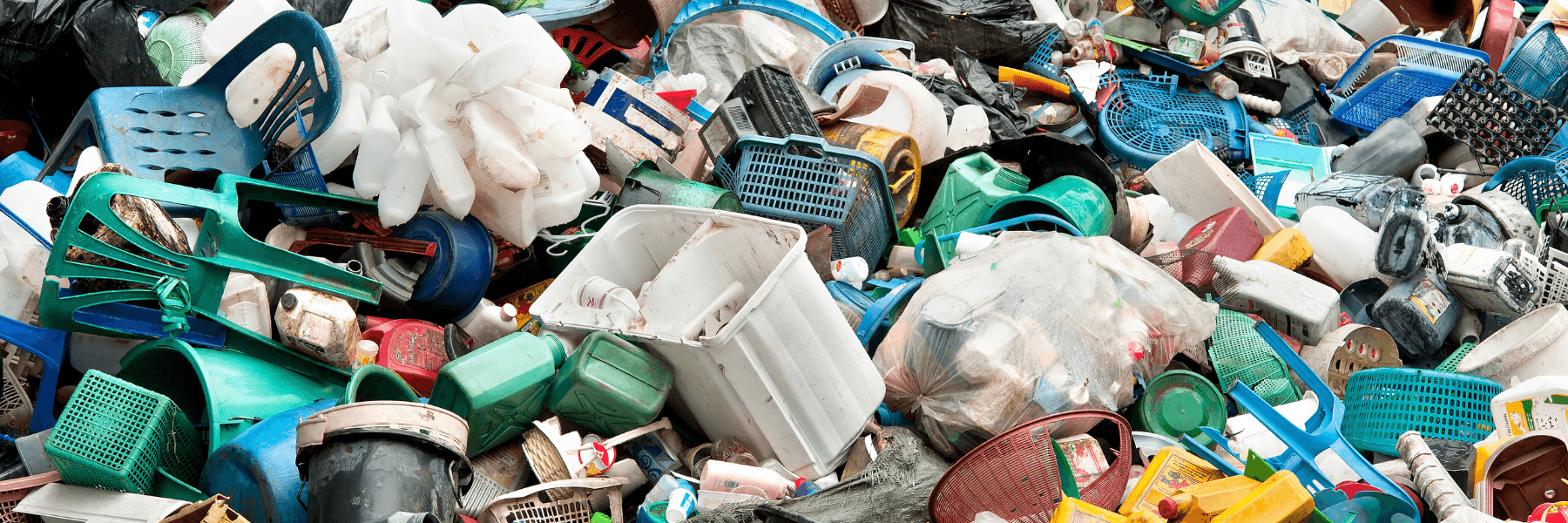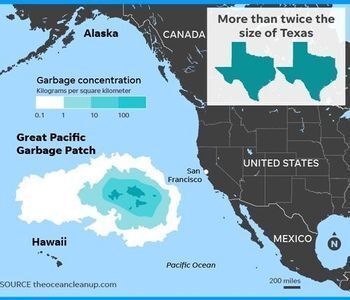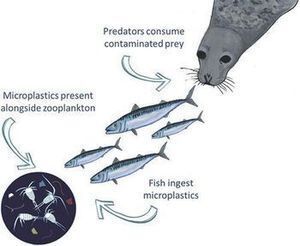Plastic Pollution
You may be shocked to learn that each year at least 14 million tons of plastic trash end up in God’s oceans.
The Great Pacific Garbage Patch, which is located between Hawaii and California, covers 1.6 million square kilometers, an area twice as big as Texas. This garbage patch contains an estimated 1.8 trillion pieces of plastic, which weigh almost 90,000 tons. This is already an alarming amount of pollution, but the truth is that this is not nearly all of it; plastics tend to stay within 100 miles of shore, and scientists estimate that 99% of plastics is under the surface of the ocean.
This does not even account for the plastic in landfills. Of the 6300 million metric tons of plastic generated by 2015, according to Science Advances, "around 9% of which had been recycled, 12% was incinerated, and 79% was accumulated in landfills or the natural environment.”
The things we label as “trash” are really failures of stewardship, failures to treat God’s creation as He does, which is our calling as images of God’s will here on Earth. And when we look at the magnitude of the problem, we quickly see it’s much too big for any one of us alone. What can one person do about a yearly deluge of up to 14 million tons of plastic trash?
A good first step is to take The Last Straw Campaign Pledge below. We can start by not using disposable plastics like drinking straws and lids and to politely decline them when out at restaurants. This may not seem like much, but even one straw can adversely impact the life of one of God’s sea creatures such as a sea turtle.
Microplastics: A Big Problem
Plastic pollution is broken down into two categories: "microplastics," which are less than 5mm in diameter, and "macroplastics," which are larger than 5mm in diameter. Microplastics in the ocean result when broken down by UV light, water, or when scraping against the sandy shores. A conservative estimate of the amount of microplastic in the ocean is 24 trillion pieces, while others estimate 51 trillion pieces.
Microplastics are also released into water when washing synthetic clothing. According to the National Library of Medicine, they "estimate that in the case of a long-fiber polyester plush fleece, 0.0012 wt% of loose microfibers is released into wastewaters during every washing.”
Artificial fibers have been found in honey, beer, tap water, and salt. It is estimated that “the average person ingests over 5,800 particles of synthetic debris from [beer, tap water, and salt] annually, with the largest contribution coming from tap water (88%).”
Unfortunately, bottled water is not a safe alternative, with over 90% of the bottled water studied having microplastics, including in bottles of Aquafina, Dasani, Evian, Nestle Pure Life, and San Pellegrino.
Microplastics only accumulate when going up the food chain: humans and animal predators eat fish, which eat zooplankton in the ocean, which eat microplastics.
It should be no shock, then, that “scientists found 39 microplastic particles within 11 of 13 lung tissue samples, and included common microplastics shed from common types of plastic including polypropylene, polyethylene terephthalate, and resin," according to the Plastic Pollution Coalition.
Health Impacts
Plastic pollution is especially harmful when inhaled or ingested because chemicals in plastics can interfere with bodily functions. For example, BPA, which makes plastic transparent, interferes with our hormonal system. DEHP, which makes plastic more flexible, is linked to cancer and interferes with many bodily systems like the endocrine and reproductive systems.
When ingested and/or inhaled, plastic particles cause “developmental, neurological, reproductive and immune disorders,” according to UNESCO. Furthermore, plastic pollution threatens the health of the ocean and its species, food safety and quality, and contributes to climate change.
Especially when breathing in microplastics, this is believed to be linked to respiratory diseases like cancer. Although there are still many more studies to be done on the effects microplastics on health, researchers are increasingly concerned.
What We Can Do
To reduce plastic pollution, you can take steps to:
- Avoid single-use plastics like drinking straws, cutlery, bottled water, etc.
- Buy more bulk food to use less packaging
- Replace plastic Tupperware with steel and glass containers
- Put your plastic waste in the correct recycling container
- Choose to reuse packaging where possible
- Avoid using cling wrap
- Avoid using hygiene/beauty products like – facial scrubs, toothpaste, body washes – that have microbeads which can pollute our water
- Cook more instead of eating out to avoid take out containers and other disposable plastics
Take the Pledge
- Decline straws and disposable plastics at restaurants
- Avoid single-use plastics like drinking straws, cutlery, bottled water
- Consider going deeper, such as:
- Asking local restaurants to only provide disposable plastics like straws when customers request them
- Asking elected officials and the local and state levels to phase out single-use plastic more generally



